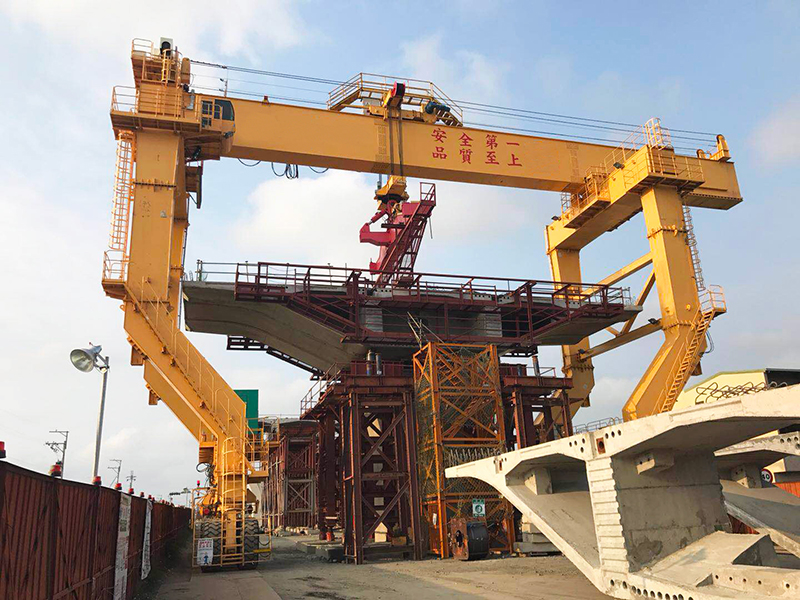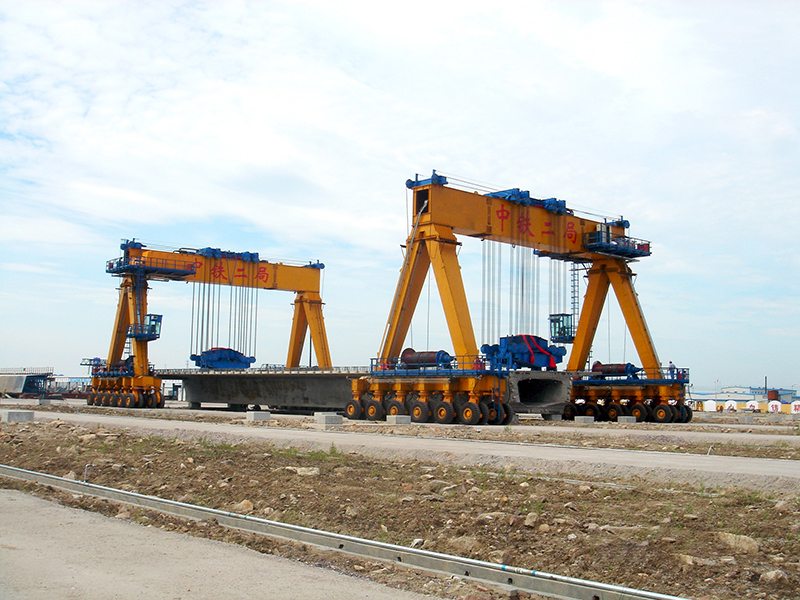In the bustling world of container handling at ports and terminals, straddle carrier cranes stand tall as essential workhorses. These towering giants are responsible for efficiently moving containers between ships and storage yards, contributing to the seamless flow of goods in global trade. However, with their impressive height and heavy loads, safety is paramount when it comes to operating straddle carrier cranes. This article explores key safety tips and practices to ensure the well-being of operators, workers, and the equipment itself in the dynamic environment of container handling.

1. Rigorous Training Programs:
The foundation of a safe straddle carrier crane operation begins with comprehensive and ongoing training programs for operators. Properly trained operators understand the intricacies of the equipment, safety protocols, emergency procedures, and the importance of situational awareness. Regular training updates are essential to keep operators informed about the latest industry standards and best practices.
2. Pre-Operation Inspections:
Before each shift or operation, a thorough pre-operation inspection of the straddle carrier crane should be conducted. This includes checking all critical components such as hydraulic systems, brakes, tires, and control mechanisms. Any signs of wear, damage, or malfunction must be addressed promptly to avoid potential safety hazards during operation.
3. Adherence to Weight Capacities:
Straddle carrier cranes are designed with specific weight capacities, and exceeding these limits can lead to instability and catastrophic failures. Operators must be diligent in adhering to weight restrictions outlined by the equipment manufacturer. Regular communication between operators and those responsible for load planning is crucial to ensure that loads fall within the crane’s safe operating parameters.
4. Strict Adherence to Load Handling Procedures:
Safe load handling is a critical aspect of straddle carrier crane operations. Operators must follow proper lifting and lowering procedures to prevent sudden movements that can compromise the stability of the crane and the safety of personnel working in the vicinity. Securing loads with appropriate twist locks or other securing devices is vital to prevent container movement during transit.
5. Awareness of Environmental Factors:
Environmental factors, such as wind speed, visibility, and weather conditions, can significantly impact the safe operation of straddle carrier cranes. Operators must be vigilant and aware of these conditions, making informed decisions about whether it is safe to operate the crane or if adjustments need to be made to account for environmental challenges.
6. Clear Communication Protocols:
Effective communication is essential in any busy port or terminal environment. Clear communication protocols between straddle carrier operators, ground personnel, and control tower operators help prevent accidents and ensure that everyone is aware of ongoing operations. Establishing hand signals, using two-way radios, and employing other communication tools can enhance overall safety.

7. Emergency Stop Procedures:
Operators should be well-versed in emergency stop procedures and be able to execute them swiftly if the need arises. Emergency stops are crucial in situations where there is a risk of collision, equipment malfunction, or other emergencies. Regular drills and simulations can help operators become familiar with these procedures and respond effectively in high-pressure situations.
8. Maintenance and Regular Inspections:
Regular maintenance is key to ensuring the longevity and safety of straddle carriers. Scheduled maintenance tasks should include inspections of structural components, lubrication of moving parts, and checks on hydraulic and electrical systems. Any identified issues should be addressed promptly to prevent equipment failure during operation.
9. Use of Personal Protective Equipment (PPE):
The use of appropriate personal protective equipment is a fundamental aspect of crane safety. Operators and ground personnel should wear PPE such as hard hats, high-visibility vests, steel-toed boots, and gloves to minimize the risk of injury in the event of an accident or falling debris.
10. Fall Protection Measures:
Given the height at which straddle carrier cranes operate, fall protection measures are critical. Operators should be equipped with fall arrest systems, and secure platforms or walkways with guardrails should be provided to ensure safe access to the operator cabin. Regular inspections of these safety features are essential to identify and address any potential issues.
11. Proactive Risk Assessment:
Conducting regular risk assessments is a proactive approach to identifying potential hazards and implementing measures to mitigate risks. This involves evaluating the operational environment, considering factors such as load weights, traffic congestion, and weather conditions. By identifying and addressing potential risks in advance, safety can be significantly enhanced.
12. Implementation of Technology:
Advancements in technology have brought forth innovative solutions for crane safety. Implementing technologies such as collision avoidance systems, sensors, and real-time monitoring can provide additional layers of safety by alerting operators to potential hazards and assisting in preventing accidents.
13. Operator Rest and Well-being:
Fatigue can compromise an operator’s ability to make sound decisions and respond quickly to changing conditions. Establishing reasonable work hours, providing adequate rest breaks, and ensuring operators have access to facilities for meals and rest contribute to overall well-being and, consequently, safety.
14. Continuous Improvement and Feedback:
Safety is an evolving process, and continuous improvement is crucial. Encouraging operators to provide feedback on safety practices and reporting near misses fosters a culture of continuous improvement. Regular reviews of safety protocols and lessons learned from incidents contribute to refining safety measures over time.
15. Compliance with Regulatory Standards:
Adherence to local, national, and international safety regulations and standards is non-negotiable. Straddle carrier crane operators and terminal management must stay abreast of regulatory changes and ensure that their operations comply with the latest safety requirements.
Conclusion:
The operation of straddle carrier cranes in bridge construction demands an unwavering commitment to safety. By prioritizing rigorous training, adherence to operational procedures, regular equipment maintenance, and the implementation of advanced safety measures, the risk of accidents can be significantly reduced. Straddle carrier crane safety is not just a responsibility; it is a collective commitment to protecting the well-being of operators, ground personnel, and the integrity of the cargo handling process in the ever-expanding world of global trade.